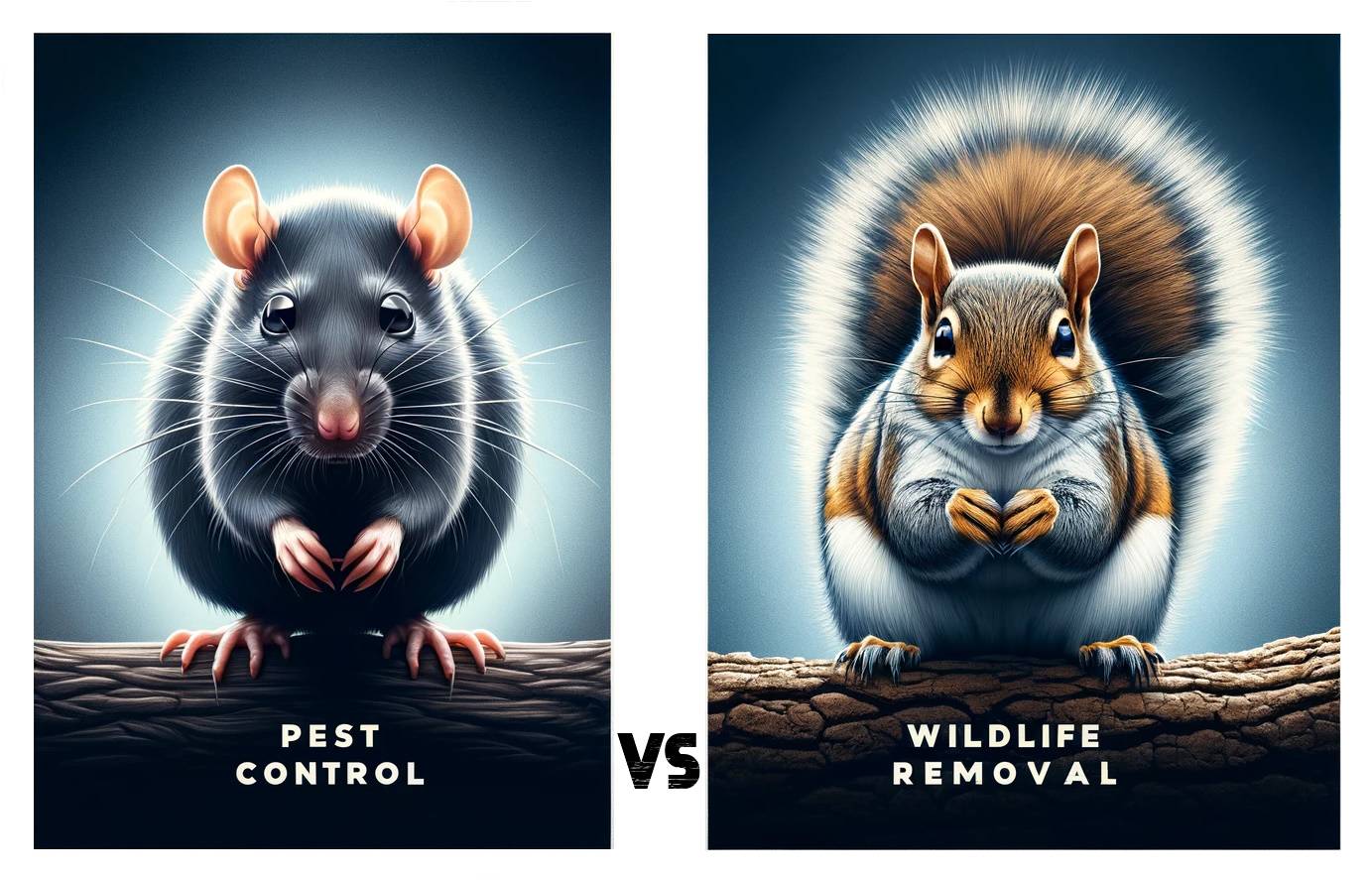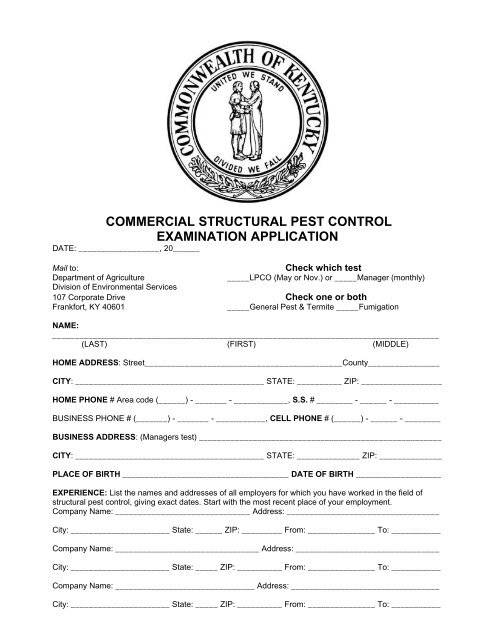Pest Control Services
While we are known for our expert wildlife control services, our proficiency extends significantly into pest control services for nuisance animals. This branch of our services is tailored to address the unique challenges presented by pests like rodents, bats, and pigeons, which are common in both urban and suburban environments.
Our pest control services are designed to effectively manage and remove smaller nuisance animals that can invade your space, causing discomfort and potential health hazards. From rat trapping and rodent extermination to more specialized services like bat removal and pigeon control, our approach is comprehensive and tailored to each situation. We also provide specialized solutions like coyote trapping, mole trapping, and skunk removal, ensuring that even the less usual pest concerns are addressed with professionalism and efficiency.
Understanding that prevention is just as important as removal, we offer services like rodent exclusion and home rodent inspections to safeguard your environment against future infestations. Our team is skilled in identifying potential entry points and vulnerabilities in your property, ensuring a long-term solution to pest problems.
At Wildlife Removal Pros, we combine our deep understanding of wildlife behavior with modern pest control techniques to offer solutions that are both effective and considerate of the animals involved. Our goal is to ensure your space is pest-free, safe, and comfortable, using methods that are as humane as they are effective.
Pest Control Laws in Kentucky
In Kentucky, the regulation of pest control, including the use of pesticides, is governed by a combination of state laws and administrative regulations. Here are some key points regarding pest control laws in Kentucky:
-
General-use Pesticides: The general public can purchase general-use pesticides without special permits or restrictions. These pesticides have a lower toxicity level compared to Restricted Use Pesticides (RUPs) and are therefore considered less likely to harm humans or the environment[1].
-
Regulatory Authority: The Division of Environmental Services of the Kentucky Department of Agriculture (KDA) is responsible for regulating the registration, sale, distribution, proper use, storage, disposal, and application of pesticides within the state. This is in accordance with the Kentucky Fertilizer and Pesticides Storage, Pesticide Use and Application Act of 1996 (KRS 217b)[1].
-
Federal Oversight: The Federal Insecticide, Fungicide, and Rodenticide Act (FIFRA) gives the Environmental Protection Agency (EPA) the authority to oversee the sale and use of pesticides at the federal level. Kentucky can enact legal requirements that are more restrictive than federal law. Violations of FIFRA can result in significant fines and criminal penalties[1].
-
Licensing Requirements: According to KRS 217B.515, any person engaging in structural pest control must be licensed. Licenses expire annually on June 30, and a renewal fee of $100 for each place of business must be submitted by July 1 to avoid suspension of the license[2].
-
Certification: Individuals must be certified in a category consistent with the sale or application of pesticides. Certification is obtained from the department and is category-specific[3].
-
Structural Pest Control: The Structural Pest Control Branch of the Kentucky Department of Agriculture oversees licensing and laws related to structural pest control[4].
-
Violations and Fines: The Kentucky Department of Agriculture has a fine schedule for violations of KRS 217B.120, which relates to pesticide use and application. Violators have the right to request a hearing[5].
-
Age and Certification Requirements: To be issued a commercial or noncommercial license to apply pesticides, a person must be at least 18 years old and certified[6].
-
Wood Destroying Organism Treatments: There are specific regulations for wood-destroying organism treatments and integrated pest management in schools, which require adherence to certain standards and practices[8].
These laws and regulations are designed to ensure that pesticides are used safely and responsibly, to protect public health and the environment. Individuals or businesses that wish to engage in pest control activities must comply with these regulations and maintain proper licensing and certification.
Pest Control vs. Wildlife Removal

Pest control and wildlife removal, while overlapping in some aspects, are distinct in their focus and methods. Understanding these differences is crucial for effective animal management.
Scope of Pest Control
Pest control is primarily aimed at managing smaller nuisance animals and insects such as rodents, ants, and pigeons. These pests can invade homes or businesses, posing health risks and causing damage. Key aspects of pest control include:
- Eliminating infestations of these pests through various methods like baiting, chemical treatments, and traps.
- Implementing preventive measures which are indeed habitat and behavior-focused, like sealing entry points and removing food sources.
- Regular monitoring and maintenance to manage ongoing or potential infestations.
Scope of Wildlife Removal
Wildlife removal deals with larger animals like raccoons, squirrels, and bats. These animals can be persistent, often causing significant damage to gain entry into a space. Wildlife removal focuses on:
- Humanely trapping and relocating these animals.
- Addressing both the immediate issue and the underlying causes, like habitat encroachment.
- Using knowledge of animal behavior and local ecosystems to implement long-term exclusion and prevention strategies.
Pest Prevention
Both pest control and wildlife removal require an understanding of animal behavior and habitat. While it’s true that wildlife can be incredibly persistent, often causing more visible damage, rodents and smaller pests can also be persistent in their own ways, rapidly reproducing and continually seeking entry into buildings.
The prevention strategies in both pest control and wildlife removal are indeed focused on modifying habitats and understanding animal behaviors. In both cases, the goal is to create an environment that is less attractive or accessible to the animals.
While pest control and wildlife removal both deal with managing animal invasions, they differ in the types of animals they focus on, the scale of the infestations or invasions, and the specific strategies employed to address these challenges. Both require a deep understanding of animal behaviors and habitats to effectively prevent future issues.
Integrated Pest Management (IPM)
Integrated Pest Management (IPM) is a comprehensive approach to pest control that goes beyond just eliminating pests. It’s particularly relevant when dealing with nuisance rodents such as rats and mice, as it combines different strategies to manage pests effectively and sustainably.
Introduction to IPM
IPM is a holistic approach that focuses on long-term prevention of pests or their damage through a combination of techniques. These techniques include:
| Type of Control | Description |
|---|---|
| Biological control | Using natural predators or parasites to control pests. |
| Cultural practices | Modifying the environment to reduce the attractiveness of the area to pests. |
| Mechanical and physical controls | Using barriers, traps, or other physical methods to prevent pests from entering or damaging a space. |
| Chemical control | Using pesticides, but only when necessary and in a targeted, environmentally friendly way. |
The key to IPM is understanding the lifecycle and behavior of the nuisance animals, and using that knowledge to implement the most effective and least harmful control methods.
IPM in Pest Control vs. General Wildlife Removal
While wildlife removal often focuses on the trapping of larger animals, IPM in pest control deals with managing smaller nuisance animals in a more integrated and preventive manner. IPM for nuisance animals involves:
- Regular monitoring and identification of pests to ensure that any action taken is appropriate and necessary.
- Assessing the risks and benefits of all control methods, and prioritizing non-chemical methods wherever possible.
- Implementing a combination of strategies tailored to the specific situation, which could include habitat modification, exclusion techniques, and responsible use of pesticides.
IPM is about creating a balance – it aims to minimize harm to the environment, humans, and non-target animals, while effectively managing pest populations. This comprehensive approach is different from general wildlife removal, which might not always involve such a diverse range of strategies for prevention and management. IPM’s emphasis on understanding and altering the environment to manage pest populations makes it a vital and distinct aspect of pest control.
Pest Rat Control
Rats are a common problem in many urban and suburban areas, including Lexington, Kentucky. Effective rat removal not only requires understanding the specific rat species in the area but also implementing safe and effective control methods.
Lexington Rat Species
In Lexington, the most common rat species include the Norway rat and the roof rat. The Norway rat, also known as the brown rat, is larger and more robust, preferring to live in lower levels of buildings or underground. The roof rat, on the other hand, is smaller and agile, often found in attics or high places. Identifying the correct species is crucial in determining the best removal strategy, as their habits and preferences differ significantly.
Dangers of Rats
Rats pose several dangers to both homes and businesses. They can cause significant property damage by chewing through wires, insulation, and structural components. Health risks are also a major concern, as rats can carry diseases like Hantavirus, leptospirosis, and salmonellosis. Additionally, rat droppings and urine can contaminate food sources and living spaces, creating an unhealthy environment.
Benefits of Professional Rodent Control
Hiring professionals for rodent control offers several benefits:
- Expertise and Efficiency: Professionals have the knowledge to quickly identify and solve rat infestations, using the most effective and humane methods.
- Safety: Professional pest control services ensure that the removal process is safe for both humans and pets, minimizing the risk of exposure to diseases or harmful chemicals.
- Preventive Measures: Beyond removal, professionals can offer advice and solutions for preventing future infestations, such as sealing entry points and eliminating food sources.
- Long-term Solutions: Professional services focus on providing long-term solutions rather than quick fixes, ensuring that the rat problem does not recur.
Effective rat control is vital for maintaining a safe and healthy environment. Understanding the specific species, the risks they pose, and the benefits of professional intervention are key steps in managing a rat infestation.
Citations: [1] https://www.uky.edu/Ag/Entomology/PSEP/pdfs/1lawsandregs1.pdf [2] https://apps.legislature.ky.gov/law/kar/titles/302/029/050/ [3] https://apps.legislature.ky.gov/law/kar/titles/302/027/050/ [4] https://www.kyagr.com/consumer/structural-branch.html [5] https://www.beyondpesticides.org/assets/media/documents/states/ky/documents/KY-Title302Ch27-29.pdf [6] https://casetext.com/regulation/kentucky-administrative-regulations/title-302-department-of-agriculture/chapter-26-pesticides/section-302-kar-26020-pesticide-certification-and-licensing [7] https://law.justia.com/codes/kentucky/2022/chapter-217b/section-217b-515/ [8] https://casetext.com/regulation/kentucky-administrative-regulations/title-302-department-of-agriculture/chapter-26-pesticides/section-302-kar-26090-wood-destroying-organism-treatments-and-integrated-pest-management-in-schools


